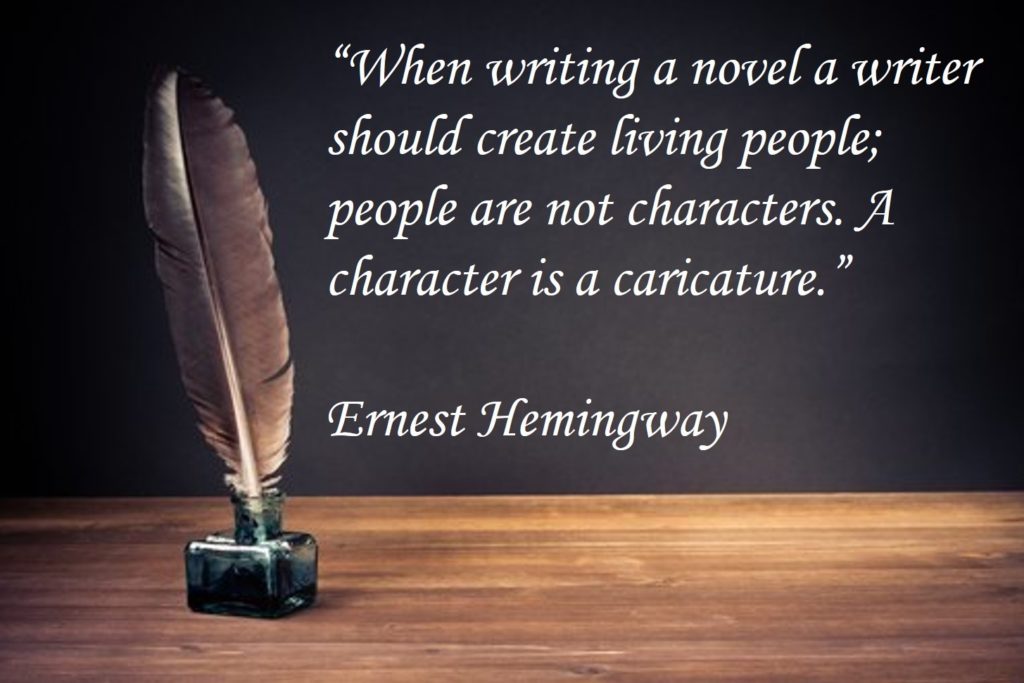[This blog was originally published in Night Owl Reviews]

Characters in your head are not real people, no matter what a platitude typed in Corsiva font scrolled across a picture of a quill tells you. They are not people, and they don’t do anything you don’t make them do. To think otherwise is to have a fundamental break with reality, and please see your doctor to adjust your medication dosage accordingly.
Sometimes I’ll be spacing out during a particularly boring meeting, and I’ll envision a scene from one of my novels in my mind’s eye. The protagonists stand together in a field of wildflowers, ready to finally declare their love for each other after a harrowing adventure that brought them together. Then the sky darkens, and I descend from the clouds on a chariot made of blue fire. My visage grows larger as I approach, skin radiant like the sun and eyes black like the devil until I loom above them, beautiful and terrible, near but distant, like a blood moon in the daytime. My hero and heroine cower before me.
“Look upon me and despair,” I tell them. “You do not exist outside of me. I AM YOUR GOD.”
Then someone in the work meeting asks me if I can update chart five of the briefing I’ve been staring blankly at, and my God avatar and protagonists, and the universe they inhabit, disappears.
So characters are not people. The same way fiction is an approximation of real life, characters are approximations of people—with several key differences.
“Real” character:
- Must be consistent.
Other than corporeality, the biggest difference between characters and real people is that characters are consistent; real people are not. When characters do something a writer doesn’t expect, it’s not because the characters are “people”; rather, it’s because the plot and the characters are conflicting. Why? Because characters must be consistent—they must respond to story events in ways that are in line with their established personality traits. If a writer introduces a plot element and expects a character to react in a way that’s not consistent with what’s come before, and she realizes it, that’s when she says a character “got away from her.” Or she doesn’t realize it, and readers accuse the story of being too “plot-driven.”
- Must be believable, but not necessarily realistic.
As stated above, characters must be consistent or they’re not believable; they become plot devices. Ironically, real people are not consistent and are therefore “unbelievable.” We do irrational shit all the time for no obvious reason. The existence of Las Vegas is clear proof to that fact, where the house always wins eventually but people play anyway. Think of all the times you did something bizarre or stupid that your close friends would say is “out of character” for you, and you thought, “Yeah, that was dumb. Not sure why I did that…Made sense at the time I guess.” Literary characters aren’t allowed to do this. Real people do this all the time. We’re a mystery even to ourselves.
- Have character arcs that mirror the plot.
As I stated in a previous post about plot versus characters, the plot of a story should mirror the main character’s internal growth. For instance, if your main character has a crippling fear of confronting his overbearing parents, the plot should culminate in him being forced to confront his parents in a gut-wrenching explosion of cathartic emotion. On the contrary, real people’s lives are often impacted significantly by random events that may or may not result in them growing as people. We’re fickle like that, but your characters can’t be because nobody wants to read about a guy having random things happen to him…those stories do exist, but they suck so don’t write one.
- Have other characters around them who are foils of them.
I also touched on this in a previous blog post—characters in a story exist in a “character web” where they interact with each other in meaningful ways that directly affect the hero’s trajectory. In real life, every individual is the hero of their own story, separate from everyone else, and have their own concepts of right and wrong, good and evil, love and hate, etc., that are based on their own unique life experiences. In fiction, stories have themes that commit to one worldview that are supported by all the characters’ actions in concert. The characters are effectively one entity rallying around a central theme, usually embodied by the main character’s story arc.
- Are almost always active, and always have driving needs and desires.
Real people often drift through life with no driving goals or desires other than getting through the day. Or they really want something…and then get hit by a car, or get cancer, or change their minds, etc. Real people are fickle and their desires fleeting, helpless to the randomness of the universe. Characters, on the other hand, want something with every fiber of their being…Well some don’t, but just like the guy stumbling from one random event to the next, those characters suck to read about. Hell, even The Dude from The Big Lebowski—the ultimate slacker—spends the entire movie trying to get his precious rug back!
Never forget the characters you create in your mind are not real people! You can base a character off a real person, but I’d caution against hewing too close to reality because you’ll run into the problems with real people I mentioned above, and you open yourself up to possible liability—unless you take care to note the character in question has a small penis. No one will come forward claiming to be that character.
